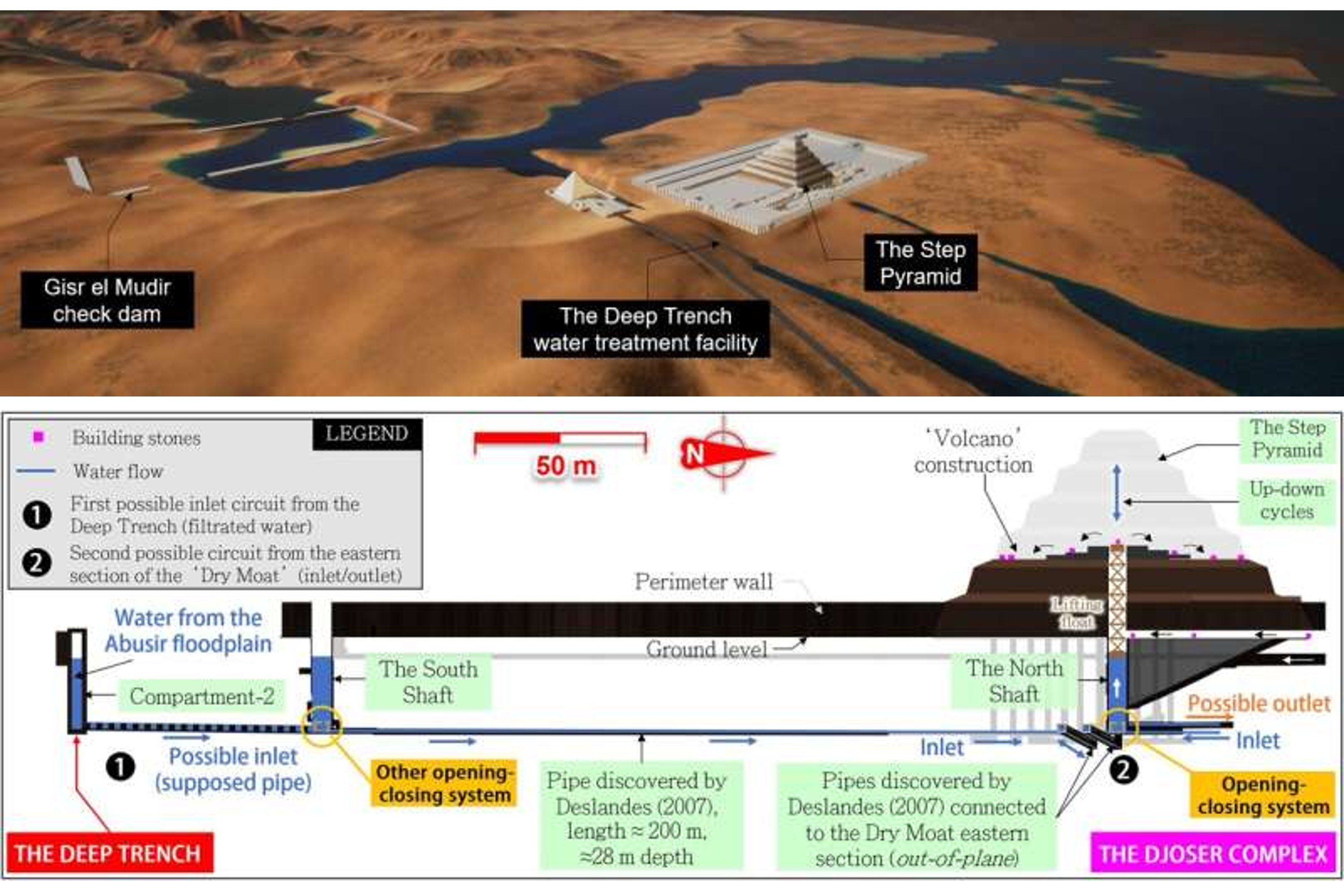Egyptian pyramids were built using an incredibly clever machine, new research suggests
have been a source of admiration and puzzlement for generations.
impressive use of water.
A recent study has found evidence that at least one of the ancient structures was constructed using technology more advanced than previously believed.
It is said that the famous 4,500-year-old Step Pyramid of Djoser was built with the aid of a distinctive hydraulic lift system.
Historically, it was thought that the Step Pyramid was primarily built using a system of ramps and pulleys.
However, a recent analysis, led by Xavier Landreau of France's CEA Paleotechnic Institute, suggests that the Ancient Egyptians channeled nearby waterways to power buoyancy systems.

The research proposes that water was utilized to flow through two tunnels, situated within the pyramid, which were used to facilitate the movement of a float system to transport massive stone blocks.
"The ancient Egyptians are notable for their innovative and expertise in hydraulics, specifically with regards to building canals for irrigation and barges for transporting large stones," the researchers stated.
This work opens a new area of study: the use of hydraulic power to construct the immense structures built by the Pharaohs.
The Step Pyramid is thought to have been constructed around 2680 BCE as a funerary complex for Pharaoh Djoser of the Third Dynasty. Still, the exact technique used to build it has remained shrouded in mystery.
Landreau and his colleagues argue that a nearby previously-unexplained structure, known as the Gisr el-Mudir enclosure, was actually a type of "check dam" employed to catch water and sediment.
They also suggest that a series of holes dug into the ground just outside the pyramid could have been used to treat water, possibly allowing particles to settle as the water flowed through each successive section.
From there, the pressurized water would then have floated the building stones through the pyramid's shafts themselves and up to the upper levels of the structure through an internal passage, in a process referred to as "volcano" construction.

Despite the authors' confidence that "the internal architecture of the Step Pyramid is consistent with a hydraulic elevation device never reported before," they still acknowledge that more research is necessary.
They now aim to determine the flow of water through the shafts and the amount of water that was available in the surrounding area thousands of years ago.
They still say that while other structures like ramps very likely helped build the pyramid, a hydraulic system should have been able to assist in the building process when there was plenty of water.
Their research, conducted in collaboration with "several national laboratories," has resulted in the discovery of a dam, a water treatment facility, and a hydraulic elevator that would have allowed for the construction of the Step Pyramid of Saqqara.
They conclude by saying, "This research marks the beginning of a new area of study for the scientific community: using hydraulic power to construct the pyramids of Egypt."
Sign up There seems to be no text provided to paraphrase.
How to join The 's free WhatsApp channel
Posting Komentar